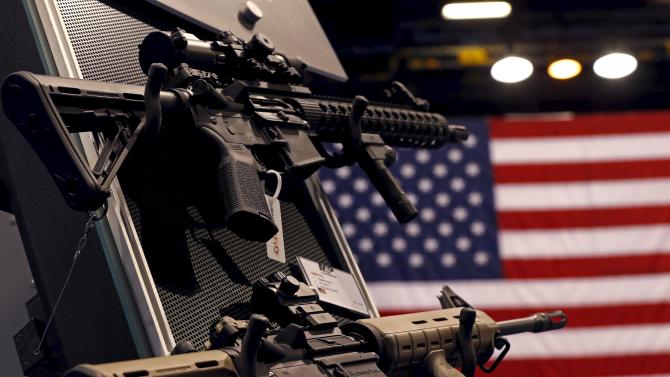Gunmaker Smith & Wesson up almost 100% in 2015
On Wednesday, the San Bernardino shooting added to an already tragic lineup of gun violence this year that includes Charleston, South Carolina and Colorado Springs, Colorado, where just this week, a gunman killed three people at a Planned Parenthood Clinic.
As details of the latest tragedy unfold, the market sell-off steepened amidst uncertainty about the motive in the San Bernardino shooting.
But one stock that continued to rise through much of Thursday and throughout gun-related violence headlines this year? Gunmaker Smith & Wesson (SWHC)—which clocked in over $500 million in sales last year—up 93% since January.
The company, which is a leading manufacturer of pistols, revolvers, tactical rifles, and black powder firearms, as well as hunting rifles, said in its latest conference call that strong sales are the result of increasing demand.
Since 1980, the number of guns in possession in the United States has essentially doubled to 350 million, according to the Bureau of Alcohol, Tobacco, Firearms and Explosives.
Wedbush Securities estimates that wholesale sales of handguns and long guns (which includes shotguns and rifles) totaled about $4 billion in 2014, based on data released by the Department of Treasury on the collection of the Firearms and Ammunition Excise Tax. This marks a CAGR of 12% from 2005 to 2014, mostly driven by handgun sales, which comprise more than 70% of Smith & Wesson’s business.
The demand is not coming from hunters. In the 31 years since the 1982 peak, the number of U.S. hunting license holders has declined 13 percent to approximately 14.6 million in 2013, according to the U.S. Fish and Wildlife Service.
And this increase has become more highly concentrated in a smaller group. Despite the continued growth in the total number of firearms in the U.S., the percentage of households that own a gun has fallen from 47% of households in 1980 to 31% of households, according to the NORC at the University of Chicago. This math would suggest that the number of guns per gun owner has increased from less than two to more than three.
Furthermore, the current number of concealed-carry permits in the U.S. stands at about 13 million, versus 4.6 million in 2007, according to the Crime Prevention Research Center.
Event-driven sales
Event-driven sales
Today's rise in shares of Smith & Wesson, amidst unfolding news of the San Bernardino shooting, reflects data showing strong gun demand after tragic events.
The chart below highlights some of the most widely reported tragic events and the spike in background checks following the violence.
The chart below highlights some of the most widely reported tragic events and the spike in background checks following the violence.
The largest month of growth for firearm background checks was January 2013, which saw an increase of more than 90 percent, according to Wedbush. This demand surge was prompted initially by the re-election of President Barack Obama, who had made tighter gun control legislation a part of his platform during the 2012 campaign and in the aftermath of the July 2012 shooting in Aurora, CO. The Newtown, CT tragedy a month after the November 2012 election further prompted an effort to ban assault rifles and high-capacity magazine pistols. These events caused a flood into stores, but no ban materialized given lack of support in Congress.
And when it seemed demand trickled off a bit, a handful of high-profile tragedies (beginning with the tragedy in Charleston, SC) hit the news in fairly quick succession, sparking a renewed interest by many to enact new gun regulations. Still no concrete legislation has materialized, and the industry saw double-digit growth over the summer.
Data suggests, contrary to common sense, that Democratic presidents have been very good to the gun industry, at least in the short run, according to Wedbush securities. The drive? The National Rifle Association has seized on regulatory comments that prey on gun advocates’ fear of governmental confiscation of guns. Yet, still, the likelihood of any actual gun legislation is exceedingly low, according to Wedbush.



No comments:
Post a Comment
Thanks for commenting. Your comments are needed for helping to improve the discussion.